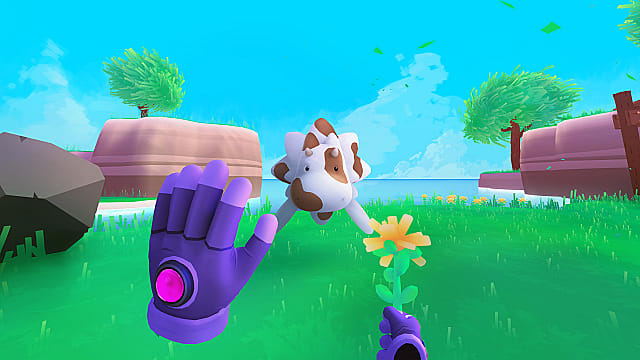
Something about its 8-bit artwork manages to feel totally authentic and while still somehow completely at home even in the medium of VR which is so far removed from the 8-bit era. COMPOUND Ĭompound is a randomly generated rogue-lite shooter with a style all its own. This is a game which delivers a sense of delight just by being in its world. Nearly everything you do feels good, thanks to intuitive interactions and expert use of sound, animation, and haptics. Fujii does so much right in design and aesthetics. The garden acts as a persistent ‘home’ space which you can cultivate and customize to your liking by planting and watering your plants. As you explore and solve light puzzles, you’ll discover new plants and bring their seeds back to your garden. The game presents a serene world which somehow manages to offer a feeling of exploration without traversing huge distances. Platform & User Reviews: Steam (94%) | Rift (4.8/5) | Quest (4.5/5) | PlayStation VR (4.5/5)įujii is part walking simulator, part puzzler, and part meditation. Without further ado, and in no specific order: Fujii For the purposes of this article, I’m loosely defining an ‘indie gem’ to mean ‘a VR game which deserves more attention than it receives’, whether or not it is from a recognizable VR studio. In the VR space most developers fit the definition of ‘indie’ (those which aren’t working with a publisher). Real quick: this list isn’t intended to be comprehensive, nor is it scientific.
#Hot dogs horseshoes and hand grenades oculus quest 2 full
And you have little to lose here if you’re using Oculus or Steam both have very reasonable refund policies: if you find out the game isn’t for you and you’ve played it for less than two hours, you’re entitled to a full refund within 14 days of your purchase. I would be blown away if everyone doesn’t find at least one title they think is worth owning in this list. So, if you want to help VR succeed, and have some fun in the process, take a careful look at these 12 indie VR gems and consider giving them a shot.

Indies are usually working with small teams and shoestring budgets if they don’t at least break-even with each VR project, it’s unlikely that they will be able to justify a followup and continue to help push VR game design forward. This is a double bummer because it’s these very developers-who are thinking outside the box and discovering what native VR games actually look like-which we should supporot if we want to accelerate the maturation of VR game design. Oftentimes these games are rated exceptionally well by those who give them a chance, but getting people to decide to try them in the first place is the real challenge. The result, as I’ve found over the years, is a surprising number of ‘indie VR gems’: VR titles which are much better than their lack of noteirty would suggest. By not obviously fitting into existing genres-the ‘shooter’, ‘RPG’, ‘racer’, ‘puzzler’, etc-it’s very difficult to actually market such titles, no matter how excellent they may be. There exists a paradox of sorts in the VR game development landscape: many of VR’s most interesting games just don’t look like the sort of non-VR games we’re all familiar with.

Updated – August 21st, 2020 The Paradox of VR Game Development Here’s 12 gems you may have overlooked but are well worth your consideration. VR games are difficult to market, especially when they don’t fit obviously into existing genres.


 0 kommentar(er)
0 kommentar(er)
